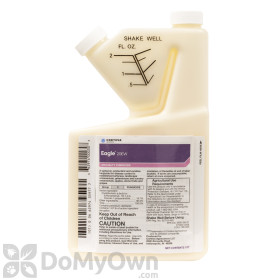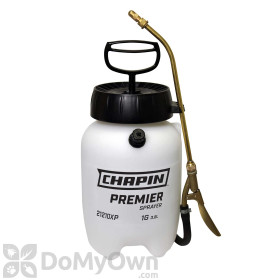
Centipede grass is commonly found in many Southern lawns and can provide an attractive welcome for homes and businesses, but it has its strengths and weaknesses. Follow along with this guide to learn more about your Centipede grass lawn, the best ways to care for it, and a few tips to enjoy a thick, weed-free lawn without a ton of work.
What is Centipede Grass?
Centipede grass is a warm season grass that requires less time spent on cultivation, mowing, or fertilization to produce an attractive turf, making it an appealing pick for many homeowners in Southeastern states. This turf, originating in central and Southern China, was introduced to the United States in the early 1900s and has since become a popular choice for Southern U.S. lawns.
Centipede grass will grow into a thick turf of coarse medium or light green blades with a shallow root system. Spreading among the blades of grass you'll also see horizontal stems called stolons. These "runners" are the plant's means of spreading and thickening across an area. Centipede grass looks similar to St. Augustine grass at a glance, and some folks appreciate this resemblance.
Climate-wise, Centipede grass prefers a mild climate without hard freezes. If struck by an occasional freeze, centipedegrass may brown in color, but it will recover and green up again as weather gets warmer.
How to Care for Centipede Grass
Centipede Grass requires less work than many other turfs, and that's welcome news to many homeowners looking to cut back on their time spent on lawn maintenance.
Mowing

Centipede grass grows more slowly than most other warm season turfs. Follow these tips to keep your Centipede grass healthy and weed-free.
- Mow every 5-7 days or as needed.
- Keep grass blades 1 to 2 inches long. Centipede grass should be kept under 3 inches high except for the first mow in the spring, when it may have reached that height. You should aim to never remove more than 1/3 of the grass blades' height with any mowing.
- Your first mow will probably occur in mid-March, after the final frost of winter. Once soil temperatures rise above 55 degrees Fahrenheit, the dormant Centipede grass will begin springtime growth.
- Continue mowing throughout the spring, summer, and fall months. Occasional mowing during winter months may keep Centipedegrass looking more attractive.
Sodding and Seeding

The best time to plant Centipede Grass is in the early summer--May or June. Soil temperatures should be at least 70 degrees Fahrenheit for best results. Planting earlier in the year will often result in more weeds sprouting among your grass.
The quickest way to set up a new lawn of Centipede grass is by sodding or applying grass seed on a well-prepared area that has been cleared of any other ground cover. Newly laid Centipede sod will require extra water for a week--up to once a day--but these requirements will decrease in the weeks that follow. Once roots are established, you will likely be watering moderately once a week.
Aerating
Compacted soil due to heavy foot traffic, silt, and clay can compress your lawn, preventing air, nutrients, and water from reaching the roots of Centipede grass. This can result in constricted growth, weeds, and pest problems.
If your turf is heavily compacted and needs some help, consider aerating your lawn in early summer when Centipede grass is growing rapidly. Aeration will help break up compacted soil allowing roots to receive nutrients. The lawn should be watered and fertilized after aeration to help it recover more quickly.
Watch the video above for more information on aerating.
Fertilizing

Fertilizing is an easy way to give your lawn the nutrients it lacks, which will help the lawn grow in fully and fight off weeds and disease. Centipedegrass grows best in a more acidic soil than most other turf. Soil pH can be chemically adjusted by following the steps below.
- Have your soil tested at your local extension office or do your own at-home soil test.
- The soil test results will show what nutrients your soil is lacking, the pH level of your soil, and what fertilizer is needed.
- Your soil pH should be kept between 4.5 and 6 for the best Centipede grass growth. If the pH is too high, meaning that the soil is not acidic enough, try adding sulfur to drop the pH level.
- Centipede grass takes best to fertilizer application just a few weeks after Spring green-up occurs, but before soil temperatures get too high. This turfgrass is also sensitive to high nitrogen levels, and should not be fertilized too heavily or too quickly. Doing so could result in an unnatural rush of growth that is more vulnerable to disease. Fertilization can continue through to the fall in 6-8 week intervals, but should not be applied to Centipede grass in cold weather to avoid plant injury.
Watering

Centipede grass does not need frequent watering. In addition to natural rainfall, you will only need to give this turf about an inch of water on occasion--if you see the grass wilting or turning grayish-green from its normal light green.
Centipede Grass Weeds and Diseases
Like any other turf, Centipede grass can be overtaken by certain weeds and diseases that grow in warm-season grasses. Maintain your lawn by fertilizing and aerating it annually to help Centipede grass resist weeds and lawn diseases.
Weed Control

There are many weeds that can grow in Centipedegrass. Depending on where you live and what weeds are prevalent in your area, you may see spurge, crabgrass, clover, or nutsedge in your lawn.
If you are aware of the potential of certain weeds in your lawn and are able to apply a pre-emergent herbicide in the fall, you will have a good start on helping your Centipede grass fight off invading winter weeds. Pre-emergents contain weed controlling ingredients that prevent weeds from growing above the soil and into your lawn. In areas with a longer growing season where Centipede grass often thrives, we recommend a split application of pre-emergent product in both the fall and spring.
If you missed the pre-emergent application window and develop weeds in your lawn, a post-emergent herbicide labeled for that weed will help control the problem. Be sure your post-emergent herbicide is labeled for use in Centipede grass or else you may damage the healthy turf during your treatment. Centipedegrass is especially sensitive to products containing quinclorac, for example, and these products can cause unwanted plant injury.
Pro Tip
Post-emergents work best when the target weeds are young and actively growing. Mature plants are harder to control with herbicides.
Disease Control

Lawn diseases can cause unsightly damage to a lawn in short order. Centipede grass may suffer from fungal infections like dollar spot or fairy ring.
Like herbicides for weed control, fungicides can be used to both treat and prevent lawn disease in Centipede grass. Read our guide on fungicides to learn when fungicides are needed, how to select the best fungicide for your lawn, and the various methods of treatment available.
Centipede Grass Pest Control
Maintaining a healthy lawn through the techniques mentioned above can help reduce pest infestations on your property, but there is always the chance that pests from neighboring lawns or plants brought into the yard may find a new home around yours.
Insecticides labeled for turf pests can help control a pest infestation and can also be used preventatively, especially if you see a certain pest year after year.
Visit our Lawn Care Guides to learn more about controlling infestations within Centipede grass. The insecticides listed below are recommended products that may be helpful along with advice from our experts.
Conclusion
Centipede grass is a hardy, low-maintenance turf that is suitable for many areas in the Southeastern United States. If you have any questions about caring for your Centipede grass, email our experts at [email protected].



















